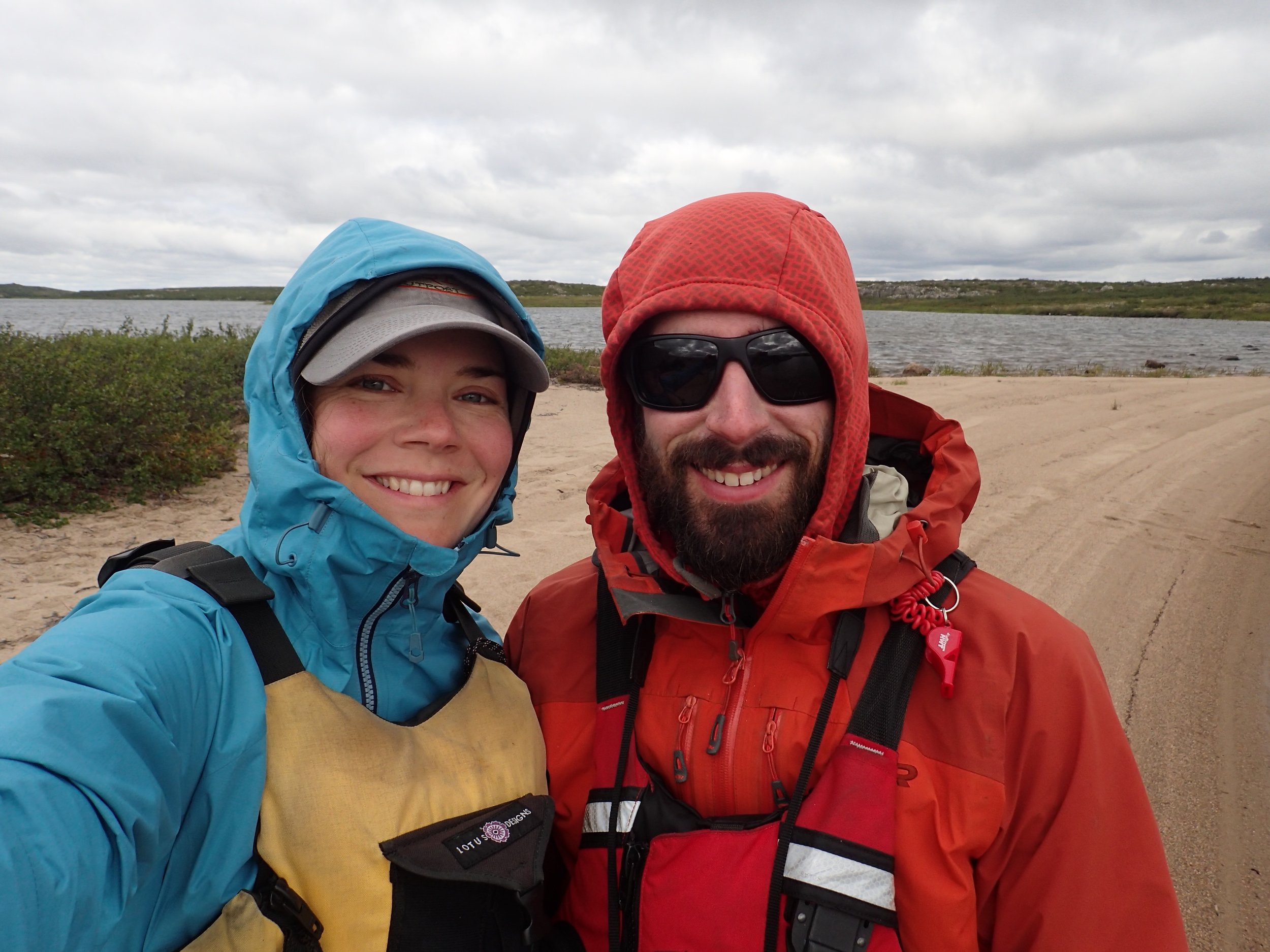Jess Dunkin is a writer and historian living in Yellowknife, who day jobs at the NWT Recreation and Parks Association. When she isn’t working with NWT communities to support on the land programs, she can be found paddling, skiing, or tweeting about life in the #spectacularNWT.
Drinking Barren Ground Coffee on the Barrenlands
If you’ve ever gone on a canoe trip with more than a handful of portages, you know that weight is an important consideration when packing. As Michael and I prepared for this summer’s canoe trip—we anticipated travelling 500 kilometres over thirty days—we thought carefully about what constituted a necessity. Toilet paper, yes. Bug spray, no. Fishing lures, yes. Forks, no. Four books, yes. Shampoo, no (that one was a mistake).
Readers of this blog will likely be horrified to discover that a device for making coffee never entered into the discussion. This is largely because before this trip one of us could count on one hand how many cups of coffee they’d had in their lifetime (Michael) and the other, while certainly a lover of coffee, didn’t drink it every day (me). I have long thought of coffee as a treat, best enjoyed with a friend or a good book. As in previous trips, we started our days on the land with a cup (or two) of orange pekoe tea.
In spite of our unconventional coffee attitudes/practices, we were delighted to discover a small bag of Barren Ground Coffee (BGC) in our food drop box when we arrived to Wekweètì. Our delight was quickly followed by bewilderment. How were we going to make coffee without a percolator or French press? Thankfully, the kind folks at Barren Ground Coffee had included some instructions for “Cowgirl Coffee” with our Guatemalan roast.
The next day, we decided to take a much-needed rest day, the first of the trip (in the previous fifteen days, we had travelled about 300 kilometres and completed upwards of 30 portages, ranging from 50 metres to 2 kilometres, many of them through thick bush or across large boulders on the sides of rivers). As we had no need to get moving that morning, we could take some extra time at our beautiful beach site on Snare Lake to try our first batch of cowgirl coffee.
Cowgirl coffee is a play on cowboy-style coffee, which is coffee made with nothing more than beans, water, and a pot, preferably over a fire, but on the barrenlands, where trees are scarce, a camp stove will do. Here is a slightly modified version of the instructions we received from BGC based on our experimentation. (Disclaimer: We are not coffee scientists, so there are likely other, better ways to do this.)
- Bring water to a boil; remove from the fire/stove.
- Let sit for 30 seconds or so to lower the temperature slightly. Boiling water can scald the grounds.
- Throw in some coffee. We wrestled with ratios, but landed somewhere around 2 tablespoons of ground coffee for every cup of water.
- Refrain from stirring and moving the pot once you have added the grounds. Just let the grounds float and do their work.
- Let the coffee sit for a bit. We think four to five minutes should do, though as we didn’t have a watch, this was always a guesstimate.
- Sprinkle a little cold water on the grounds. This should cause them to settle to the bottom (we discovered that if you move the pot at all while it is steeping, the sprinkle doesn’t have the same effect).
- Slowly pour the coffee into your mugs. Ideally, the grounds will stay in the pot.
- Eat Enjoy your coffee!
We so enjoyed our first foray into camp coffee, that, as we did with our much-loved dried mango stash and the chocolate bars, we rationed our Barren Ground Coffee over the second half of the trip, to ensure that whenever we needed a little extra encouragement, there was a cuppa joe waiting for us. Like the morning we rose at five to cross White Wolf Lake before the wind came up, delaying breakfast until we’d put in some kilometres. The BGC served as a carrot, urging us to keep paddling until we were safely out of the wind.
We were so good at rationing that we arrived back to Yellowknife with a few tablespoons to spare. I loaded these into my Aeropress the following morning, heated some milk on the stove, and enjoyed a bastardized version of a latte. Even a few weeks out from roasting, it was heaven.
Something happened on the barrenlands with those first few cups of BGC because since returning home, I’ve become an everyday coffee drinker. These days I’m enjoying BGC’s Indonesian “darker” roast, as well as the Ethiopian. Michael is a harder coffee nut to crack, though he agrees that the best place to drink Barren Ground Coffee is on the barrenlands.


